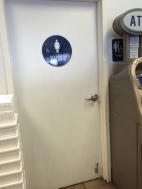 I was challenged today, challenged by a great teacher who tagged me and four other educators worth keeping an eye on if you’re on Twitter. Third grade teacher, Lisa Nowakowski, also known as @NowaTechie and author of Nowa Techie, directed her challenge towards me, Kevin Ashworth, Andy Losik, Rae Fearing and Travis Phelps. The shout out is part of the #MakeSchoolDifferent Challenge which originated in a post on Scott McCloud’s blog dangerously ! irrelevant. Educators across the nation are tagging one another to acknowledge five things in education we need to stop pretending. That’s the easy part. The hard part is coming up with solutions to trends that educators are acknowledging in their posts.
I was challenged today, challenged by a great teacher who tagged me and four other educators worth keeping an eye on if you’re on Twitter. Third grade teacher, Lisa Nowakowski, also known as @NowaTechie and author of Nowa Techie, directed her challenge towards me, Kevin Ashworth, Andy Losik, Rae Fearing and Travis Phelps. The shout out is part of the #MakeSchoolDifferent Challenge which originated in a post on Scott McCloud’s blog dangerously ! irrelevant. Educators across the nation are tagging one another to acknowledge five things in education we need to stop pretending. That’s the easy part. The hard part is coming up with solutions to trends that educators are acknowledging in their posts.
So here it is. Five things we need to stop pretending…
- That school is engaging our students
- That our students see the relevancy in what they’re learning
- That class size doesn’t have a meaningful impact
- That standardized testing is bad
- That it isn’t okay to acknowledge that taking care of the teacher is putting students first
Here’s the thinking behind each of the bullet points.
- Students sit, sit and sit throughout their school day. As Alex Wiggins noted in his blog post after shadowing a student for two days, sitting is exhausting. I sat with our students on the same uncomfortable bench without a backrest for a 45 minute assembly on the use of social media last week. I found the topic very interesting, but we just sat and listened for 45 minutes. I started to become more aware of my need to stand up, stretch, urge to share a comment and started to look around. As I looked around, I saw students distracted in a variety of manners and I understood why. It wasn’t that the content wasn’t interesting, there just wasn’t an opportunity to engage/interact with it. Kids want to learn! They need to be able to interact with the learning and we need to create classroom structures and environments that will make them feel welcome, comfortable and allow them to interact with one another and move around as they learn.
- It continues to be a tradition honored by each generation of students that attends school to ask, “Why are we learning this? Why do I need to know this?” As a profession, we continue to struggle with showing our students the relevance of much of their classroom instruction. My anecdotal observations show that teachers who take a project based learning approach to classroom instruction have students who have a greater understanding of the relevancy of their learning.
- John Hattie’s research, as published in his book Visible Learning for Teachers, shows that there is a limited correlation between class size and student achievement. One thing we don’t pretend is that a teacher’s job is so much more than a focus on student achievement. As a profession, most of us share an interest in teaching the whole child and having strong school to home relationships. It makes a difference if an elementary teacher has 25, 32 or 38 students assigned to their class. It makes a difference if a secondary teacher has 150 student contacts per day or 200 or 250.
- Standardized testing has earned a bad rap. Politicians and the media have taken what can be useful data to evaluate student progress over time and program effectiveness and turned the testing results into a way to judge and punish schools and to create a perception that some schools are better than others based on a snapshot of academic testing. The truth is the data from these types of assessments do give us useful information. It is unfortunate that these tests have been given the power to negatively judge our schools and that the results are so often used to criticize or are misused when making comparisons.
5. Every educator will tell you, “It’s about the kids first.” This phrase is also used to stop a counter argument in it’s tracks.The quickest way to win an argument in education is to imply in any way that the other’s person’s opinions are not putting kids first. Taking care of our teachers and all educational professionals is putting kids first.
![]() I now challenge some of my colleagues who I have great respect for to join this challenge and to share their posts with us on Twitter. Ken Durham, Kaleb Rashad, Dr. Eric Chagala and Sammie Cervantes what do you think?
I now challenge some of my colleagues who I have great respect for to join this challenge and to share their posts with us on Twitter. Ken Durham, Kaleb Rashad, Dr. Eric Chagala and Sammie Cervantes what do you think?










